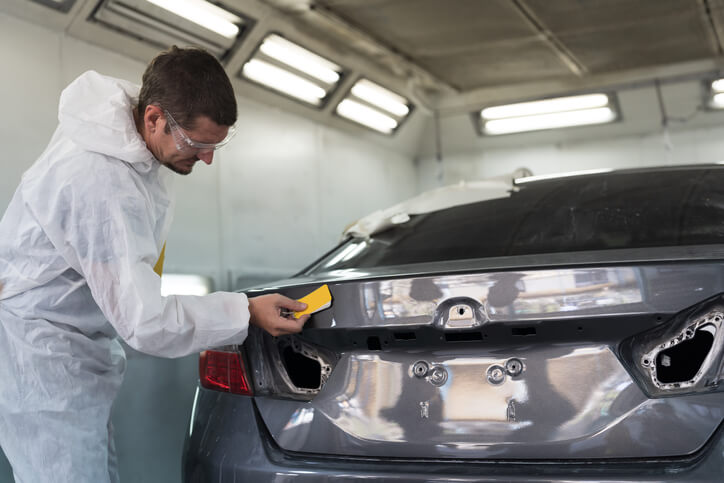
What to Do if Your Car Has Flood Damage: A Guide to Auto Body Repair and Restoration
- May 8, 2023
- MP Auto Body Repair
Flood damage to a car can be a distressing and overwhelming experience for any car owner. Whether caused by heavy rainfall, rising waters, or natural disasters, flood damage can result in significant issues that affect your vehicle’s safety and performance. In such unfortunate circumstances, it is crucial to act promptly and take the necessary steps to address the damage. In this comprehensive guide, we will walk you through what to do if your car has flood damage, with a focus on the importance of auto body repair and restoration to ensure your vehicle remains in optimal condition in Canadian conditions.
1. Prioritize Your Safety
If your car has been affected by floodwaters, prioritize your safety and the safety of your passengers. Never attempt to start the engine or drive the vehicle before ensuring it is safe to do so. Check for visible signs of damage, such as water lines on the car’s exterior, and assess the depth of the water around the vehicle before attempting to move it.
2. Tow Your Car to Safety
If your car is partially or completely submerged in floodwaters, do not attempt to drive it out. Water can cause severe damage to the engine, electrical systems, and brakes, making the car unsafe to operate. Contact a professional towing service to move your car to higher ground or a safe location for inspection and further action.
3. Document the Damage
Before contacting your insurance company or an auto body repair shop, document the flood damage to your car thoroughly. Take clear photographs and videos of the water level inside and outside the vehicle, the extent of the damage to the interior and exterior, and any visible signs of water infiltration. This documentation will be essential for insurance claims and auto body repair assessments.
4. Contact Your Insurance Company
Notify your insurance company about the flood damage as soon as possible. Provide them with accurate details of the incident and the extent of the damage, along with the documentation you have gathered. Your insurance company will guide you through the claims process and advise you on the next steps.
5. Avoid Starting the Engine
Even if the water has receded, refrain from starting the engine until a qualified mechanic has thoroughly inspected your car. Attempting to start a flood-damaged engine can cause further damage to vital components, leading to more extensive auto body repair work.
6. Get a Professional Inspection
Have your car inspected by a certified mechanic or an auto body repair specialist with experience in dealing with flood-damaged vehicles. They will assess the extent of the damage, identify issues, and recommend the necessary repairs and restoration work.
7. Address Water Infiltration
Floodwaters can seep into various parts of your car, including the engine, transmission, and electrical systems. Water infiltration can lead to corrosion, electrical malfunctions, and damage to vital components. Auto body repair specialists will address water infiltration and take appropriate measures to prevent further damage.
8. Remove and Clean Interior Components
Flood damage can leave your car’s interior damp and prone to mould and mildew growth. Have the interior components, such as the carpet, seats, and insulation, removed and thoroughly cleaned to prevent any potential health hazards and odours.
9. Dry Out the Vehicle
Properly drying out your car after flood damage is crucial to prevent further issues. Auto body repair specialists will use specialized equipment to dry out the interior, engine, and electrical components thoroughly.
10. Assess and Repair Electrical Systems
Floodwaters can cause electrical components to short-circuit and malfunction. A comprehensive assessment of your car’s electrical systems will identify damaged parts that require repair or replacement.
11. Engine and Transmission Inspection
The engine and transmission are particularly susceptible to damage from floodwaters. A thorough inspection will determine if any components need repair or replacement to ensure your vehicle’s optimal performance.
12. Brake and Suspension Inspection
Flood damage can compromise the integrity of your car’s brakes and suspension system. An auto body repair specialist will inspect these crucial components to ensure they are safe and functioning correctly.
13. Preventative Measures for the Future
After addressing flood damage, take preventative measures to protect your car in the future. Avoid parking in flood-prone areas, especially during heavy rainfall or natural disasters. Additionally, consider investing in flood insurance coverage for added protection.
14. Choose a Reputable Auto Body Repair Shop
Selecting a reputable and experienced auto body repair shop is essential to ensure quality and reliable restoration work on your flood-damaged car. Look for certifications, customer reviews, and a track record of successfully handling flood damage repairs.
Conclusion
Experiencing flood damage to your car can be a daunting situation, but taking prompt and informed actions can help mitigate the impact and ensure your safety on the road. From prioritizing your well-being to contacting your insurance company and getting a professional inspection, each step plays a crucial role in protecting your investment and preserving the performance of your vehicle.
MP Autobody Repair is your trusted choice for auto body repair in Calgary. From minor scratches to dings, our team will quickly restore it to its previous condition. Our auto body repair services can be done while you wait, or we provide rental cars to let you get on with your day! Contact the expert team at MP Autobody for your repairs. We can give you the best service, for the best price. We’ll have you set and back on the road as soon as possible. Questions? Contact us today:
SE CALGARY: (403) 640-4748
NE CALGARY: (403) 291-5577
CONTACT US TODAY
MP Auto Body Repair is your all-in-one source for auto body work in Calgary. No matter what make and model you have, we'll do our best to get your vehicle back to its prior condition. Call today to learn more about our services or visit our Calgary body shop alternative restore your vehicle today.
SE CALGARY:
(403) 640 - 4748
REQUEST A QUOTE



